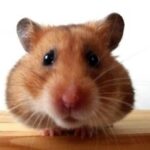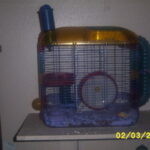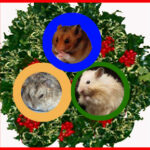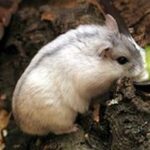There are several different species of hamsters available as pets, but they all have similar preferences in bedding and nesting materials. Bedding material is what is at the bottom of the cage, but the nesting material is what the hamster prefers to sleep in. No matter what bedding or nesting material you choose for your hamster, make sure to clean or change it often. Never use kitty litter, corn cobs or cedar wood shavings.
Good Bedding
The requirements for good hamster bedding are that it’s absorbent, soft and does not harm the hamster if the hamster should eat some of it. It’s even better if the bedding is easily available in local shops, but that may not be the case where you live. Hamster-safe bedding is easily available from online shops.
Bedding made from aspen wood is recommended by many hamster owners. It comes in several different textures but is soft and absorbent. Unlike some other types of wood bedding, aspen does not give off harsh fumes nor has oils that a hamster may be allergic to. This still may have some dust. There are some anectodal reports that hamsters can develop allergies to aspen. If they sneeze more than usual or develop itchy bald spots on aspen, remove the aspen.
Another good choice is lightweight fiber made from wood pulp, usually under the brand name Carefresh. The demand for this small animal bedding is growing so much that you may be able to find this at local department chain stores. This is usually more expensive than aspen but is usually dust-free. It can come in some eye-opening colors, as well.
Decent Bedding
Straw makes a decent bedding, but it can have some sharp bits in it. There are commercial small animal bedding made from chopped up and treated straw that is often sold in a form that looks like small pellets. One brand of this type of bedding is Critter Country.
Hay makes a decent bedding, but it is expensive and isn’t as absorbent as other materials. Also, since the hamster will want to eat some hay, it may accidentally eat hay that has been soiled on. It can do in an emergency. Pine bedding will also do for an emergency. Kiln-dried pine bedding is best.
Recycled paper products also make decent hamster bedding, but this is a type of bedding that you either love or hate. Some people claim it just isn’t as absorbent and odor-controlling as other bedding types. Some brands may have gypsum or other odor-controlling agents added.
Great Nesting Material
Hamsters like soft, fluffy material for their nests. Although there are commercially made all natural materials (some dyed in bizarre colors like cotton candy pink), there’s no need to go to all of that expense. Also, there are some stories that commercial nesting material made of cotton, nylon or celluose fibers can get stuck in a hamster’s cheeck pouch and cause infection.
Clean, unscented facial tissues, paper towels or soft white toilet paper will do. Make sure the material does not have lotions or fancy patterns on it which could include ink the hamster may be sensitive to.
Additional References:
“Hamsters.” Nancy Ferris, et al. Bow Tie Press; 2008.
“Training Your Pet Hamster.” Gerry Bucsis & Barbara Somerville. Barron’s; 2002.
Hamster Hideout. “Bedding.” http://www.hamsterhideout.com/bedding.html
HammysWorld. “Hamster Nesting Material.” http://www.hammysworld.com/index.php?p=nesting








